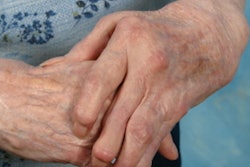Hydrocephalus is a severe condition in infants and requires immediate diagnosis and therapy, according to presenter Dr. Johannes Thüring, of University Hospital RWTH Aachen, and colleagues. The researchers evaluated whether using SWE to assess increased intracranial pressure in infants was a feasible option and compared values between healthy newborns and those with hydrocephalus.
The study included 166 newborns and infants; of these, 110 were healthy asymptomatic children and 56 had diagnosed hydrocephalus. All the patients were examined with B-mode ultrasound, Doppler ultrasound, and SWE.
Brain SWE was technically viable in 88.7% of the healthy children and 93.3% of the children with hydrocephalus. SWE values were higher in children with hydrocephalus compared with healthy children (mean 28.9 kPa versus 18.2 kPa; p = 0.0012).
The study findings are promising, but more research needs to be done, according to Thüring's group.
"More evidence is necessary to further evaluate the usefulness of SWE measurements in neonates with hydrocephalus," the team concluded.



















